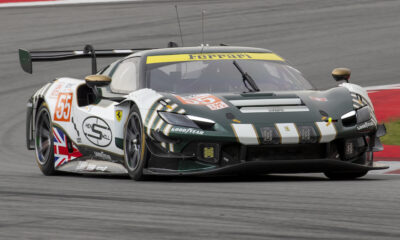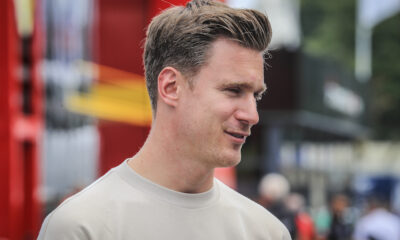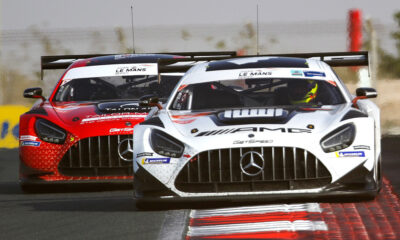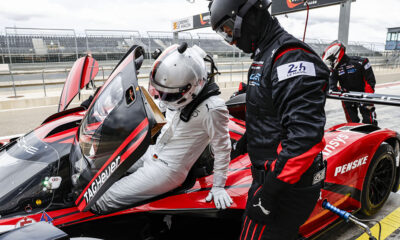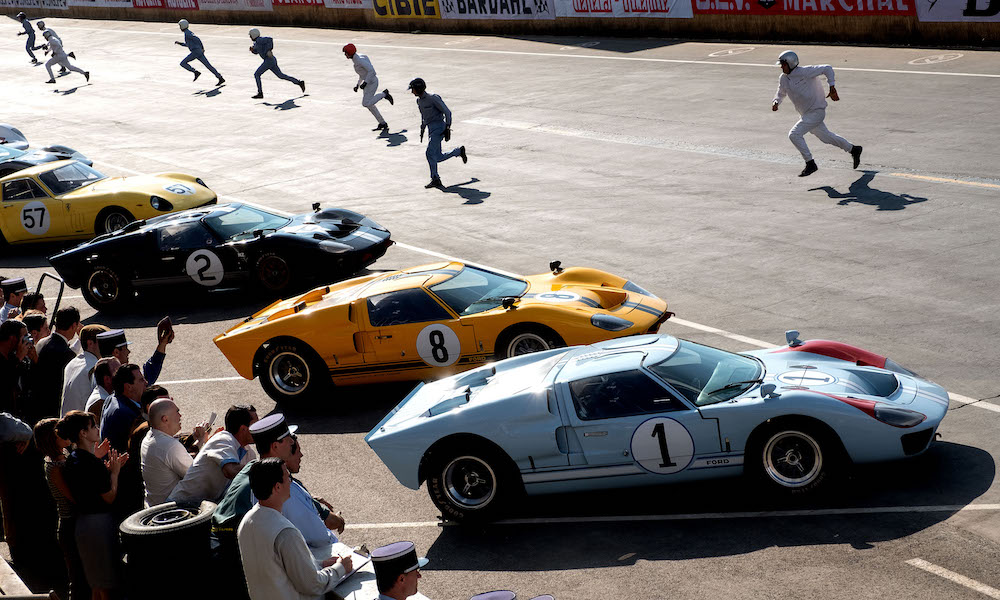
Photo: Fox
History would have you believe that Bruce McLaren and Chris Amon’s Ford GT40 Mk. II won the 1966 24 Hours of Le Mans.
And if you watched Ford v Ferrari (a.k.a. Le Mans ’66) you would probably be willing to argue that Ken Miles and Denny Hulme were the winners – morally, at least.
However, if you were stood in the reimagined Le Mans tribunes erected in rural Georgia for the filming of the Oscar-nominated motion picture, you would have seen Ronnie Bucknum and Dick Hutcherson’s Holman & Moody car lead home the famous 1-2-3 finish.
Admittedly, that Ford was already several laps down on the two ahead of it, but there was still an immense significance for the stuntman behind the wheel at that moment.
“We filmed it and I have it on my phone,” proves Jeff Bucknum, the former American Le Mans Series racer who sat in for his late father Ronnie and, in that deleted scene, took the checkered flag first.
Bucknum, who retired from racing in 2012, was part of a crack team of stunt drivers – many of them former competitors – who created the vital action scenes.
“In the real race in 1966 my dad finished third; even in the photos he’s the third car in the back,” he recalls.
“When we did the finish scene, I told all the stunt guys that I’m going to gas it and take first on the first cut. As they said action and got close to the line, I gassed it and ‘won’, but the directors were all going, “Cut! Cut!”
“But having that moment, even when you pull up and stop and get out, with all the fans, it felt like you were really at Le Mans.
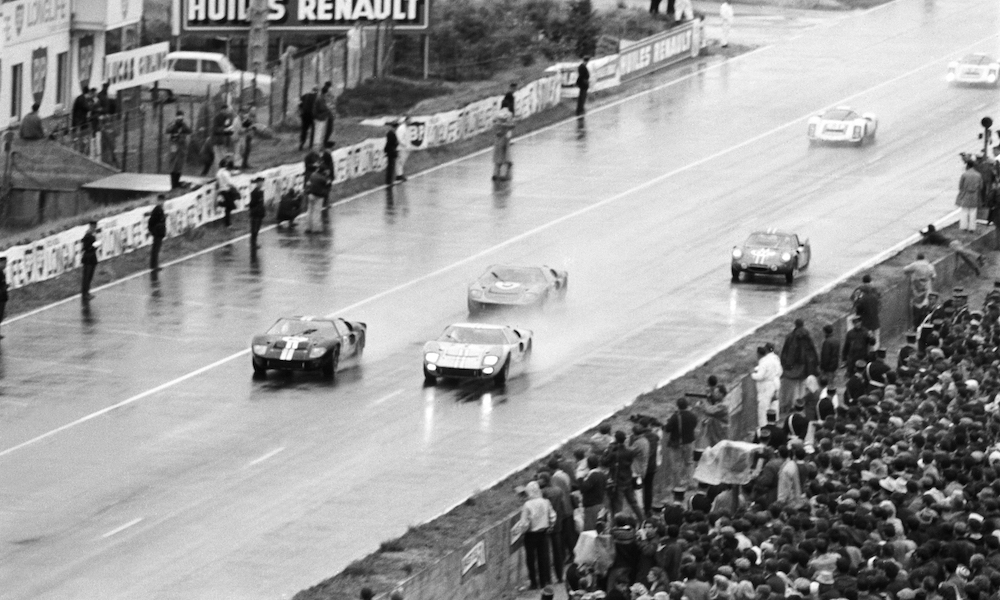
Photo: Ford
“We did a lot of driving [for the film] and that just felt like my racing,” Bucknum continues. “It didn’t really feel like I was part of my dad’s history or the car’s history. But when we did the finish…
“That was all pretty emotional, knowing the history. I kept looking back at the original pictures as we were filming the scene, how they came across the line.”
Bucknum hadn’t done much stuntwork until Ford v Ferrari. Rather, it was a friend of his, pro stuntman Rich Rutherford, who persuaded the film’s bosses to get him on the team.
Even so, it was actually off-road star Tanner Foust who technically played Ronnie Bucknum, although some grace was given to Jeff considering his unique family tie to the story.
“Since they had already put Tanner in, [director] James Mangold had already hired him, I didn’t technically get the role of my dad,” he explains.
“There were two lines that my dad had that didn’t make the final cut, but they were so gracious to make sure I did all the driving in my dad’s car.
“So, I got to do all the driving in that, and I got to drive at least six other cars in the movie, mainly because my dad’s car doesn’t really show until the 1-2-3 finish at the end.”
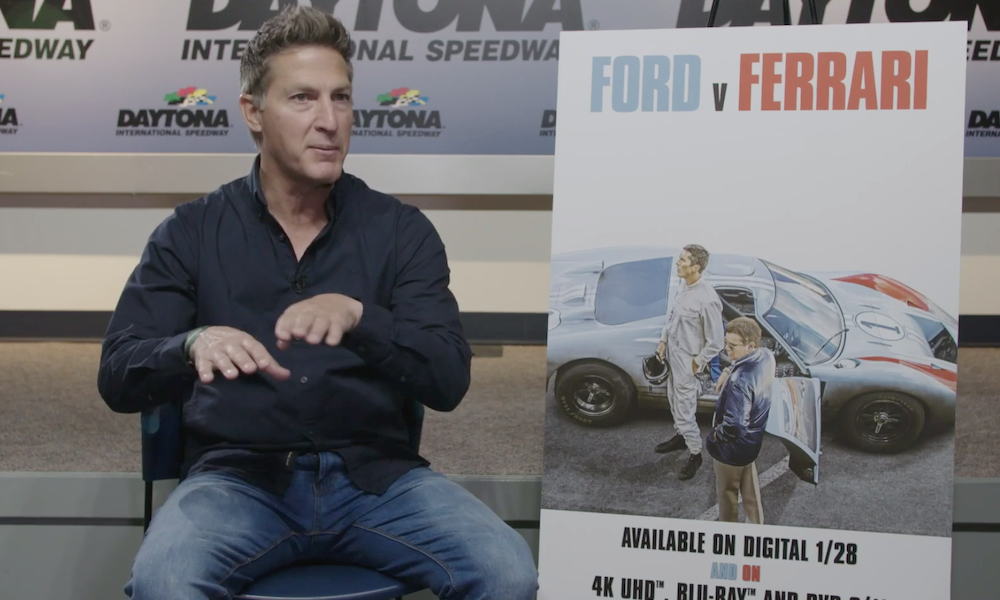
Photo: Thinkjam
Recreating History, One Stunt at a Time
As part of this once-in-a-lifetime job, Bucknum ended up doing around 40 days of driving which took up more than 80 percent of his time on set.
The role saw him and the rest of the core stunt team, made up of about seven drivers, including former Corvette factory driver Kelly Collins, driver-turned Flying Lizard Motorsports team principal Darren Law and hill climb star Paul Dallenbach, rotate between the different vintage cars depending on who was available for each shot.
This meant Bucknum filled in as Ferrari ace Lorenzo Bandini on one occasion, and also all-American racer Dan Gurney who was played by his son and former racer Alex.
Having stunt drivers with racing tenure contributed to the production team’s goal of recreating the ’60s sports car scene as accurately as possible.
Robert Nagle, the film’s stunt coordinator, is an avid motorsport fan and wanted to seize the opportunity of giving an authentic portrayal of the era’s racing to the masses.
“When I was putting the team together, it was paramount that I had guys that could drive to that level,” Nagle tells Sportscar365.
“What I needed was guys with their expertise who could exceed what the car was capable of, so I’m not being held up by someone [who couldn’t]. The whole team did an amazing job.”
The whole Ford v Ferrari crew had different levels of racing knowledge, from the show-focused directors to the acquainted stunt and sub-directors to the stunt drivers who actually worked or still work in the sport.
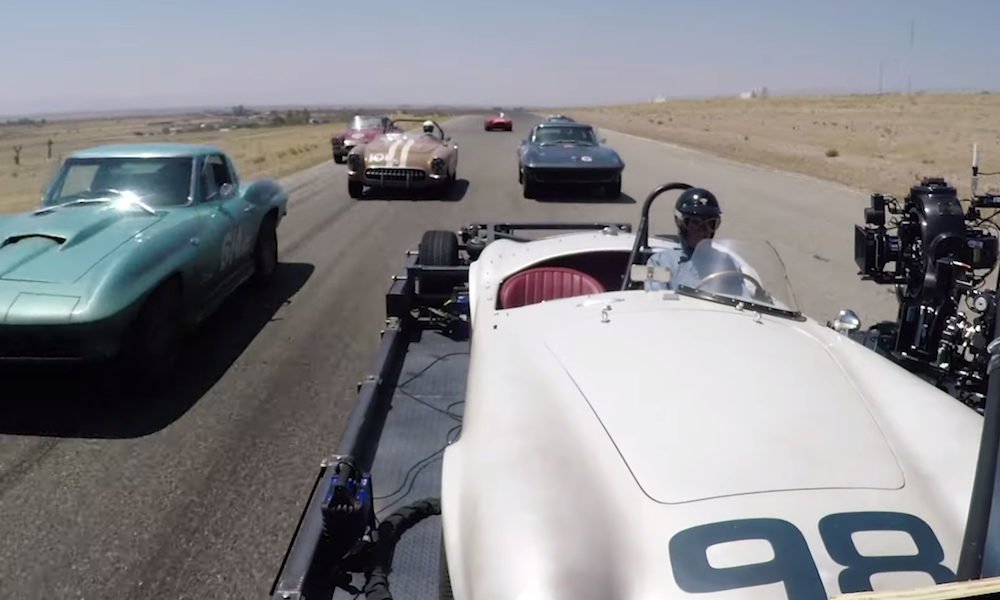
Photo: Ford v Ferrari
“One of the things I loved about working with James Mangold was that there was a lot of back and forth,” says Nagle.
“Him not being a car guy, he really looked at me and Darren Prescott – our secondary director – to put together the car stuff. We actually wrote stories for the different races, with his approval.
“With a lot of the things, he would come up to me and say, ‘look, I understand what you’re trying to say here, but how do we tell that to the audience?’
“I’d have to go back and take up that challenge to figure that out. That back and forth, trying to get that vision out on film with his storyline was great.”
As a racing movie, the action sequences lay at the beating heart of Ford v Ferrari.
This kept the stunt team extremely busy with complicated sequences containing lots of mini stunts including the SCCA race at Willow Springs, the Daytona 24 Hours and the Le Mans denouement.
To Bucknum, who also raced at Le Mans in 2003 and in IndyCar, the hardest part for the professional drivers was not the wheelwork itself, but the logistics of shooting a scene.
“The only difference is understanding from the filming aspect what they’re trying to get because sometimes you’re not even in the shot and sometimes you are,” he says.
“Sometimes you will repeat the same shot six times, not because you got it wrong but because you need to get it from different angles.
“To us, the driving is as natural as driving on the highway. The hardest part is knowing where they want you and what you’re supposed to be doing for each shot they’re trying to do, which isn’t too difficult if you’ve got someone like Robert Nagle, who was great.”
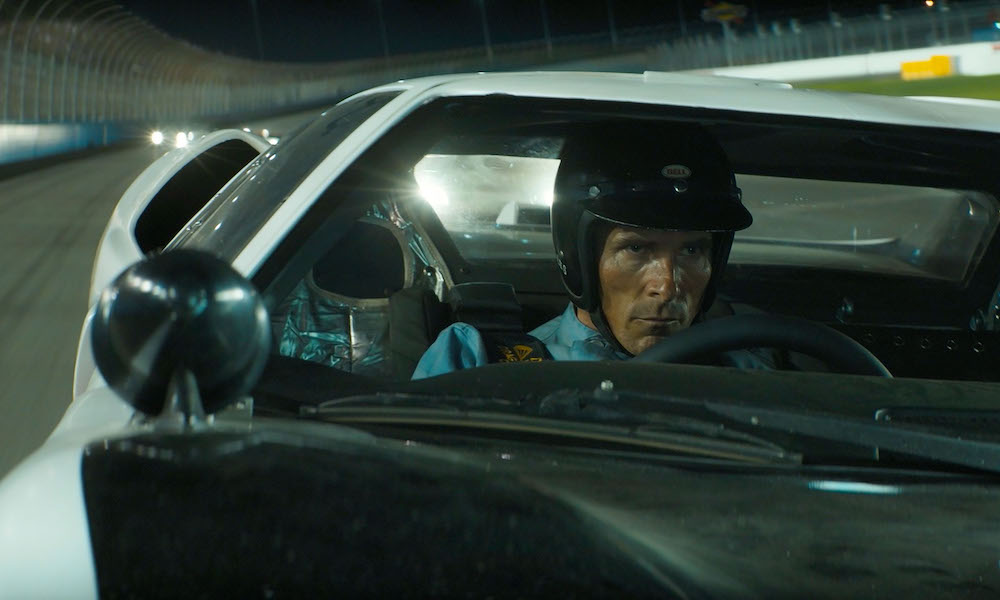
Photo: Fox
Bringing Bale Up to Speed
With the professional racers left to do their thing, Nagle was able to focus on his responsibility for training and overseeing lead actor Bale and, to a lesser extent, his co-star Matt Damon (as Carroll Shelby) when the two Hollywood giants needed to perform behind the wheel.
Bale, of course, plays Miles whose journey to the top of the Ford lineup provides the main personal axis of the story underneath the corporate war between the Blue Oval and Ferrari.
“There’s a process I go through to train people to a certain level, when they need to be on another level on camera,” explains Nagle.
“There are so many other elements going on with the filming that I need to know they can handle that kind of pressure.
“I took him [Bale] out to Bob Bondurant’s school to train, for two reasons. One, it’s a great facility, and two, I wanted him to meet Bob Bondurant who was an icon of the era.
“What I didn’t realize was that Bob was very close friends with Ken Miles, so there was a tremendous amount of information that he got from that.
“In that week that we spent there, we ended up spending four of five hours a day just sitting down talking to Bob, which was truly amazing to do.
“Bob did also get in the car with Christian and apparently he wasn’t supposed to! But he had a ball and Christian had a great time going out with him.”
Most of Bale’s work focused on the ‘Biscuit Jr’, which is Nagle’s own high-performance mobile rig capable of reaching 150mph with a race car shell strapped onto it.
It cost around $500,000 to build and is based on an earlier, larger rig used for the equine classic Seabiscuit (hence the name).
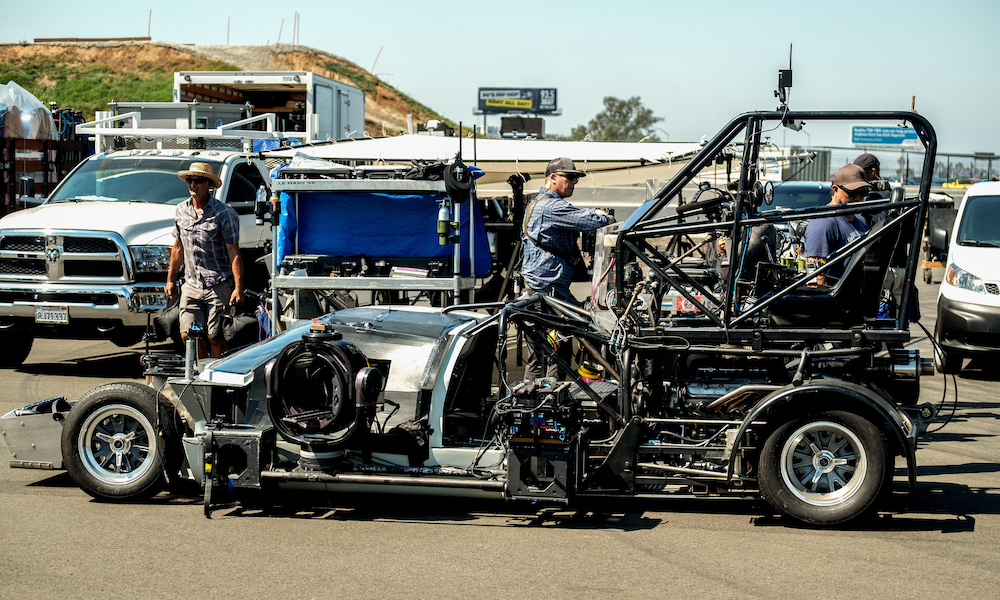
Photo: 20th Century Fox
The result of all this was a mixture of immersive sequences taking the viewer right into the cockpit with Miles and his contemporaries, and more distant pans offering the trackside spectator’s perspective.
Weaved into those primary car shots were CGI elements in the background as well as Nagle’s stunt team, including Bucknum, providing the context of other competitors which when sewn together resulted in some truly striking action scenes.
Despite noticing some anachronisms, the audience seemed to love what it saw and the reviews for Ford v Ferrari have been flattering.
The reaction will only enhance the 1966 edition’s already legendary reputation and cement that period of racing as one of the most storied and iconic.
Bucknum reckons the driving talent he and his fellow stuntmen represented would be astounded at the impact their jobs have had on motorsport and sporting history.
In particular, he likes to think about how his father Ronnie – one of America’s finest from the day – would react to all the retrospective fanfare.
“I think he’d be amazed because he was just doing something that was in the moment,” supposes Jeff.
“I know, speaking to my dad about these things he would just say that he raced in this race and finished third in a GT40, but it is history. We look back at it and it’s such a big deal.
“Of course it wasn’t just another race because it was the 24 Hours of Le Mans, but for what it’s become… it’s such a huge factor in where Ford has gone from there, and what it did for Ford at the time.”
Ford v Ferrari is available now on Digital and on 4K UHD, Blu-ray and DVD Feb. 11.
The film is nominated for four prizes, including Best Picture, at Sunday evening’s Academy Awards in Los Angeles.



















